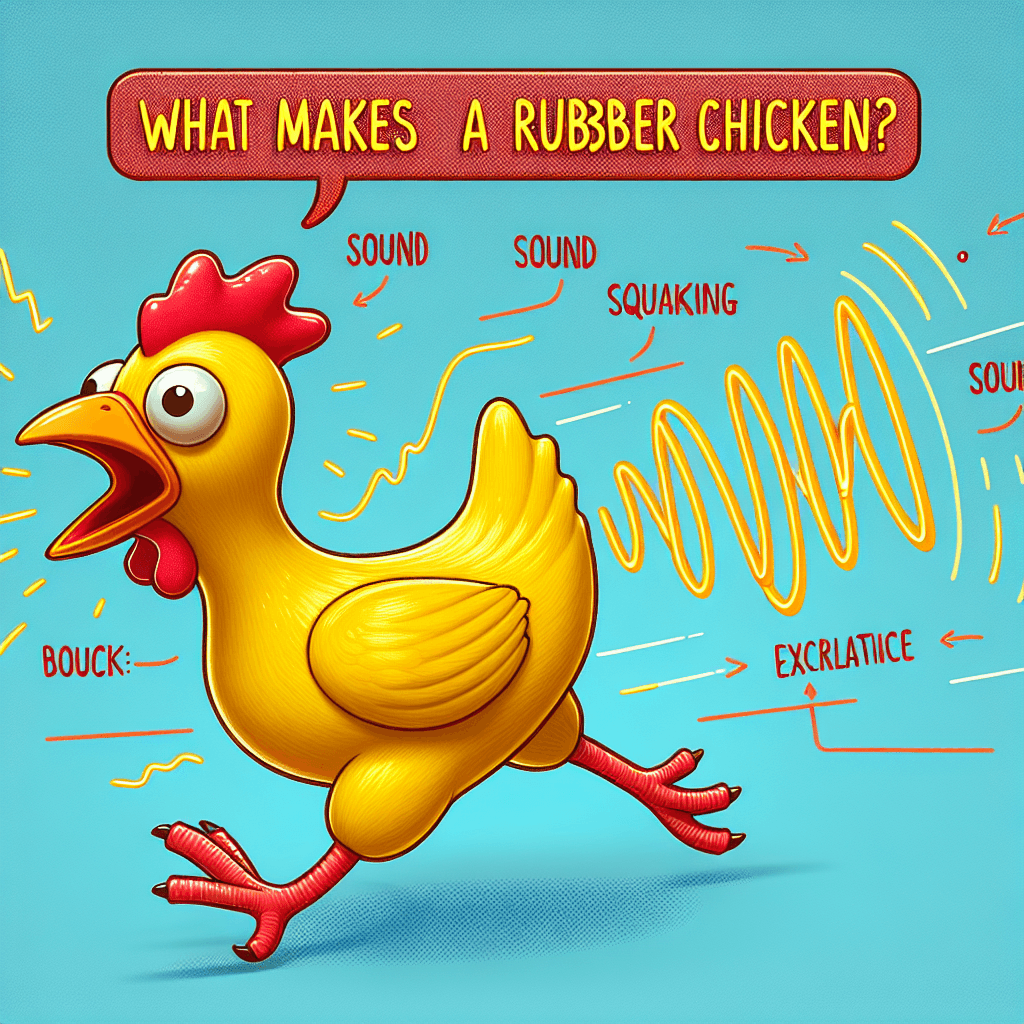What makes a rubber chicken produce its classic squawking sound
It's not just a simple squeaker—discover the surprisingly clever physics behind why the chicken squawks on both the squeeze *and* the release.


Too Long; Didn't Read
TLDR: Squeezing the chicken forces air across a small internal reed, which vibrates to create the classic squawking sound.
The Squawk Box: What Makes a Rubber Chicken Produce Its Classic Squawking Sound?
It’s one of the most recognizable sounds in the world of comedy—a frantic, high-pitched squawk that can elicit a groan or a giggle. The rubber chicken is more than just a prop; it's a comedic institution. But have you ever stopped to wonder what’s actually going on inside that pliable poultry to produce such a distinctive noise? The answer isn't magic, but a clever and surprisingly simple application of physics. This post will dissect the anatomy of the squawk, exploring the simple mechanics that transform a squeeze into a symphony of silliness. Get ready to uncover the science behind this classic gag.
The Core Components: More Than Just Rubber
At first glance, a rubber chicken seems incredibly simple. However, its iconic sound is the result of two key parts working in perfect harmony. While we call it a "rubber chicken," most are actually made from a more flexible and durable soft vinyl or latex.
- The Hollow, Flexible Body: The chicken's body acts as a bellows or an air reservoir. Its primary job is to hold a volume of air and, because of its flexible nature, to be easily compressed and return to its original shape.
- The Squawker: This is the heart of the operation. Tucked away inside the chicken, usually in the neck or beak area, is a small device called a squawker (or squeaker). This simple noisemaker is the true source of the sound.
The Science of Sound: A Two-Part Process
The classic rubber chicken squawk isn’t just one sound, but two distinct noises created by a single squeeze-and-release action. This is due to the clever design of the squawker, which functions as a two-way reed valve.
The Squeeze: Forcing Air Out
When you squeeze the chicken, you rapidly decrease the internal volume, increasing the air pressure inside. This compressed air has to escape, and its only exit is through the tiny squawker device. Here’s what happens:
- Air Rush: The high-pressure air is forced through a narrow opening in the squawker.
- Reed Vibration: Positioned over this opening is a thin, flexible piece of plastic or metal called a reed. The powerful rush of air causes this reed to vibrate extremely quickly.
- Sound Waves: These rapid vibrations create sound waves, which we perceive as the loud, high-pitched initial "squawk!"
Think of it like the reed in a clarinet or a saxophone, which vibrates as a musician blows air past it to create a musical note. The rubber chicken works on the exact same principle, just with a much less refined result.
The Release: Sucking Air In
The second, often overlooked part of the sound occurs when you let go.
- Creating a Vacuum: As the chicken’s vinyl body springs back to its original shape, the internal volume increases, creating a partial vacuum. The pressure inside is now lower than the pressure outside.
- Inward Airflow: To equalize the pressure, air from the outside is sucked back in through the squawker.
- A Different Vibration: This inward flow of air also causes the reed to vibrate, but often in a different way. This typically produces a lower-pitched, gurgling, or wheezing sound that completes the chicken's classic call of distress.
This two-stage process—the forceful squawk on the squeeze and the gasp-like squeak on the release—is what gives the sound its frantic, comedic character.
Conclusion: The Simple Genius of a Gag
The unforgettable squawk of a rubber chicken is a testament to elegant, simple design. It’s not a complex electronic device, but a masterful use of air pressure, vacuums, and the basic physics of sound vibration. By combining a flexible air reservoir with a simple two-way reed valve, this humble prop creates a sound that has echoed through decades of comedy stages, film sets, and prank videos. So, the next time you hear that iconic cry, you’ll know it’s not just a silly noise—it’s a perfect, practical demonstration of acoustics in action.
More Articles

Why do some military submarines have a rubber-like coating that makes them look lumpy?
That bizarre, lumpy skin isn't a design flaw—it's a high-tech shield that swallows enemy sonar pings whole, turning a billion-dollar war machine into a ghost.

Why does a hagfish produce enough slime to instantly fill a bucket?
A predator attacks, and in less than a second, the water becomes a suffocating, gill-clogging trap—this isn't science fiction, it's the hagfish's bizarre secret to survival.

Why do some bridges mysteriously sing or hum loudly on windy days?
That eerie hum isn't just the wind; it's the bridge itself singing a powerful song of physics that can sometimes be a warning of catastrophic failure.